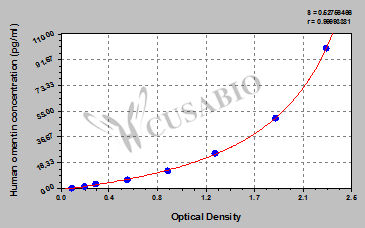The human ITLN1 ELISA Kit allows for the in vitro quantitative determination of ITLN1 concentrations in serum, plasma, cell culture supernates, or tissue homogenates. This kit exclusively recognizes human ITLN1. Omentin, also called intelectin-1 (ITLN1), is an adipokine with an anti-inflammatory function and is generated by the stromal-vascular fraction of visceral adipose tissue. ITLN1 has recently been identified as a secretory and galactofuranose-binding lectin and is primarily produced in the gastrointestinal goblet cells and omentum. Evidence has shown that ITLN1 is involved in the gut immune defense against microorganisms, insulin-stimulated glucose uptake, chronic obstructive pulmonary disease, and asthma. ITLN1 also participates in neoplastic diseases such as pleural mesothelioma and gastric and prostate cancer.
The detection mechanism of this kit is based on the Sandwich-ELISA technique. ITLN1 in the sample is bound to the capture antibody immobilized on the microtiter plate and then sandwiched with a Biotin-labeled ITLN1 antibody. The solution color develops into blue after the ordinal addition of HRP-avidin and TMB. The color development is terminated after adding the stop solution, and the color turns from blue to yellow. The color intensity is positively correlated with ITLN1 content in the sample. The kit has been quality-controlled with high sensitivity, strong specificity, good linearity, high precision, high recovery, and high lot-to-lot consistency.






